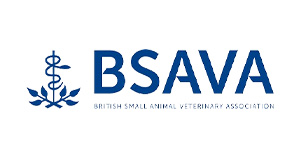In like a lion, out like a lamb
Publish on: Mar 12, 2021
March. In like a lion, out like a lamb. Or in my case, out like a lamb, out like a lamb, and… out like a lamb. We are in the middle of lambing season in the West country, and you may have started noticing little woolly creatures bouncing about and kicking up their heels in the fields. For many, it is one of the first signs of spring, and this new life is unveiled along with the daffodils and tulips.
Little lambs are beautiful but fragile beings. They normally weigh between 3.5 and 6 kilograms at birth, but this can vary significantly depending on the breed and number of lambs born to a ewe. Most ewes give birth to their first lamb(s) at around two years of age and these two years will have been filled with significant time, effort and money to raise a strong healthy ewe to join a flock.
With springtime comes new life, warmer weather and longer days. And with springtime also comes longer walks with your furry four-legged friends. But your canine companion may view sheep in a different light than you and it’s important to walk your dog responsibly to avoid any issues.
What is sheep worrying? This term not only covers dog attacks on sheep, but also any form of stress placed upon these animals, including chasing and cornering them in a fenced pasture or enclosure. When sheep (the prey) are placed in a very stressful situation being chased or cornered by a dog (the predator), they can panic and cause self-injury, a ewe can mismother or abandon her lambs, or they can over-exert themselves in an attempt to avoid predation, resulting in severe muscle damage, shock, and ultimately death.
There are the obvious and immediate effects of sheep worrying, but there are also longer-term and hidden consequences. Besides the trauma and damage caused to sheep themselves, there is significant financial burden placed on farmers through loss of livestock. A lot of care, time and money goes into raising sheep, and the loss of any single animal is significant. When a pregnant ewe is chased and/or attacked by a dog, this can mean the potential loss of not only the ewe, but every lamb that she carries. Similarly, the death of a ewe with young lambs at foot results in orphan lambs. So you can see how the negative impact of sheep worrying can be significantly greater than what is immediately apparent.
Each year, myself and my colleagues go out to examine and stitch up sheep that have been attacked by dogs. Often these injuries are located around the face, throat and hindend regions where these animals are not covered and protected by dense wool, and are therefore where they are most vulnerable. These injuries can hinder the ability of the animal to carry out basic life functions, such as eating and drinking, and sadly then the only solution is humane euthanasia.
Apart from harm to sheep, there are also concerns for dogs that are involved in sheep worrying. Sheep worrying is classified as an offense, and in some instances, farmers are legally entitled to shoot dogs that are worrying their sheep. Obviously this potential consequence magnifies a tragedy even further.
Please keep all this in mind as you are walking through the countryside. Have your dog on a leash and under close control when around livestock, as it is no fault of their own to follow their natural instinct of wanting to chase sheep. Remember, an ounce of prevention is worth a pound of cure! I hope you all have a wonderful spring, and that you safely enjoy all the new life in the mid-Somerset countryside.











